Whispers from the Maze pre-releases begin today! I just finished prepping for my pre-release weekend, and I thought it would be worth sharing my first impressions of the limited format.
Disclaimer: I haven’t played with the cards outside of a game each with the Axiom and Ordis demo decks on BGA. This is all purely my speculation.
Check back next week to see what I got right and what I missed!
Noteworthy commons
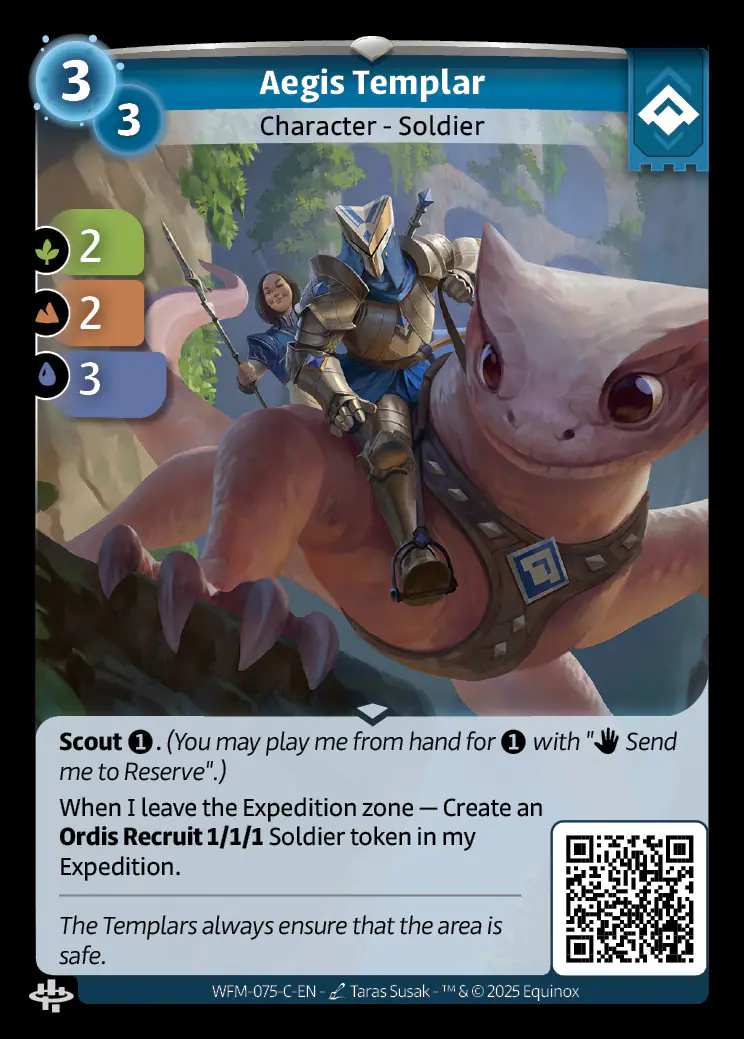
Aegis Templar (C): This provides a ton of value and flexibility. 3/3/4 across two bodies and two days puts on lots of pressure, but where it really shines is the option to use it as a 1-mana Rallying Call (C)-style after-you when needed.
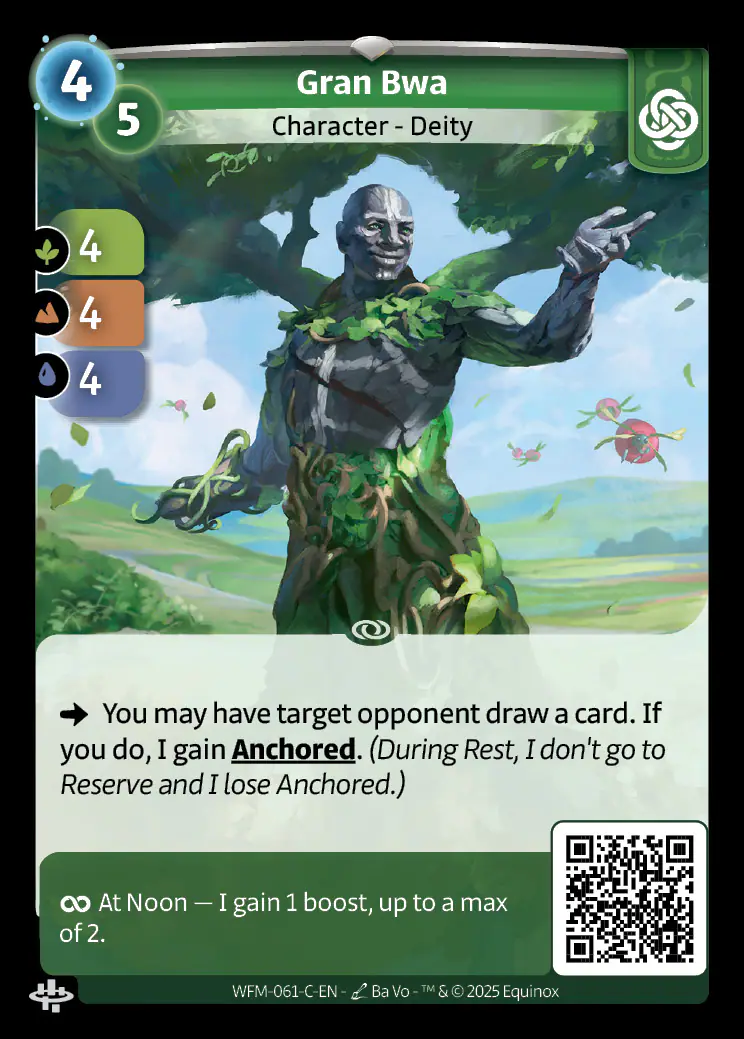
Gran Bwa (C): An anchored 4/4/4 (or 5/5/5 for Teija) can often 1-1 on the day it comes down and 2-0 on the following day. Giving an opponent a card is a serious downside, but I expect the extraordinary stat output this provides to be worth it. Anchoring this on curve gets punished by 3+ open mana in the form of X Marks the Spot, Merlin, Sap Dispersal, or Theseus, but if you sense the removal coming, this is serviceable when played unanchored.
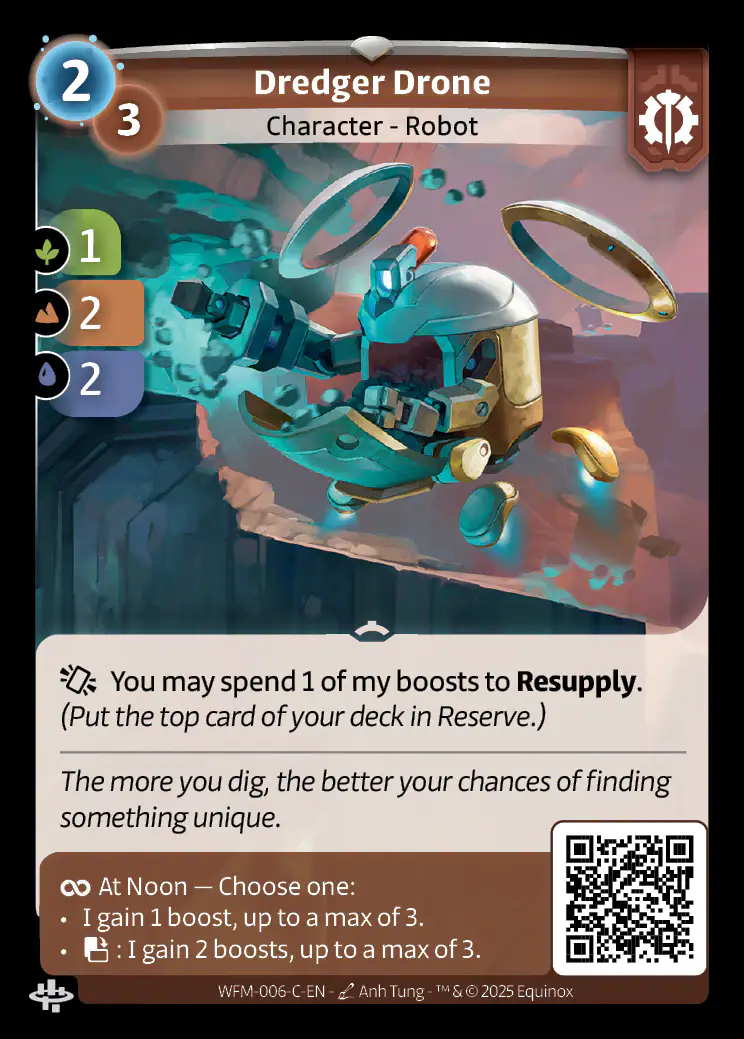
Dredger Drone (C): A 2-mana 1/2/2 on the front is respectable, and then you can wait 2 days for a 3-mana 4/5/5 or a 3/4/4 that resupplies, both overstatted. The resupply is what you want, but I like that you can go for the stats if the boost matters.
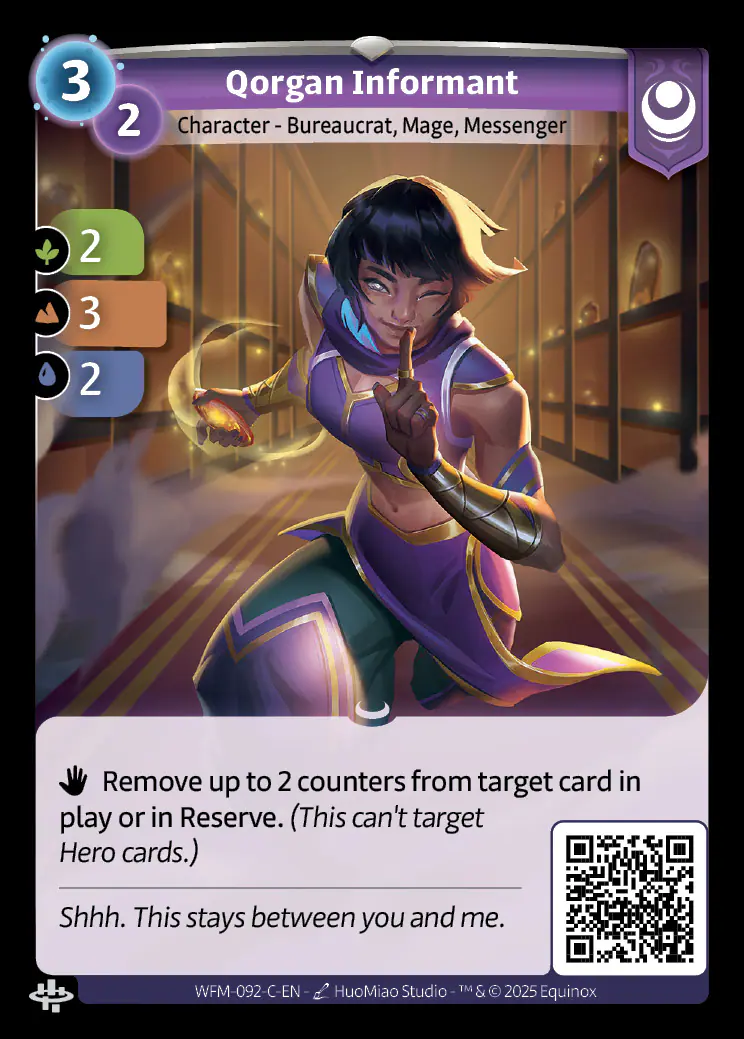
Qorgan Informant (C): This should often find a target due to all the passive support abilities running around. It’s respectable as a 3-mana 2/3/2, but if it hits a double-boosted character in play, it effectively provides a net 4/5/4 in stats.
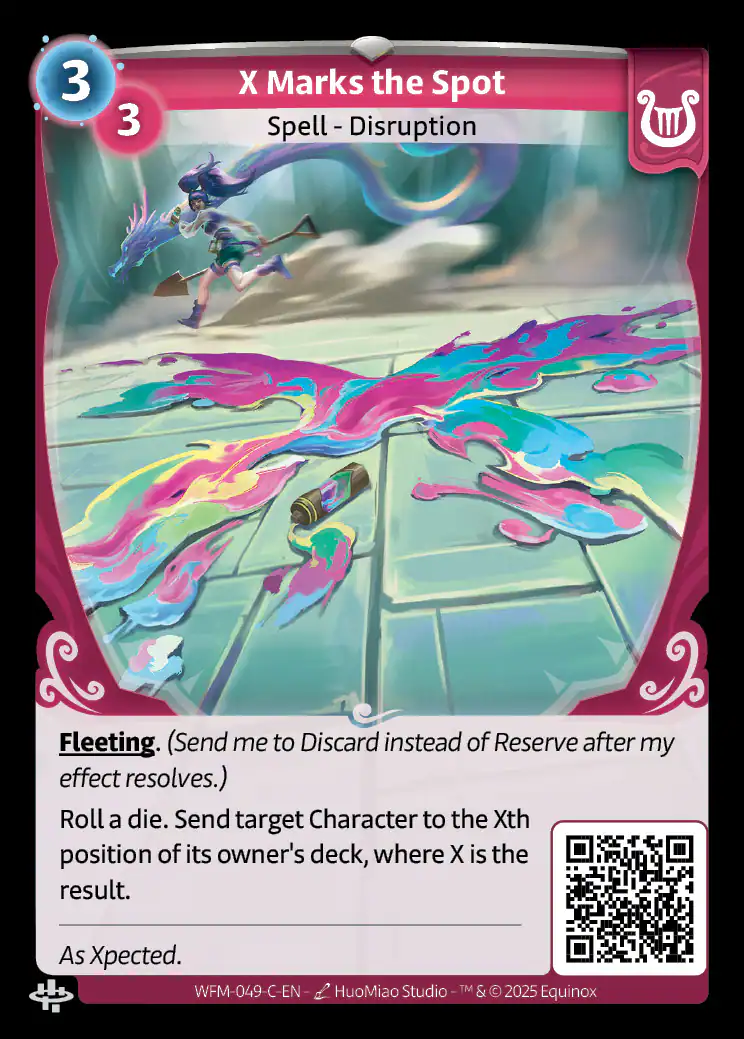
X Marks the Spot (C): I’m sticking with my prediction that this will be the best unconditional character removal we’ve seen at common for limited. The only thing to be careful about here is not to overload on removal spells.

Ordis Accountant (C): A 2-mana 2/2/2 is solid in limited, and the 3-mana 3/3/3 sleep-on-a-stick from reserve will be a nightmare for your opponent to play around.
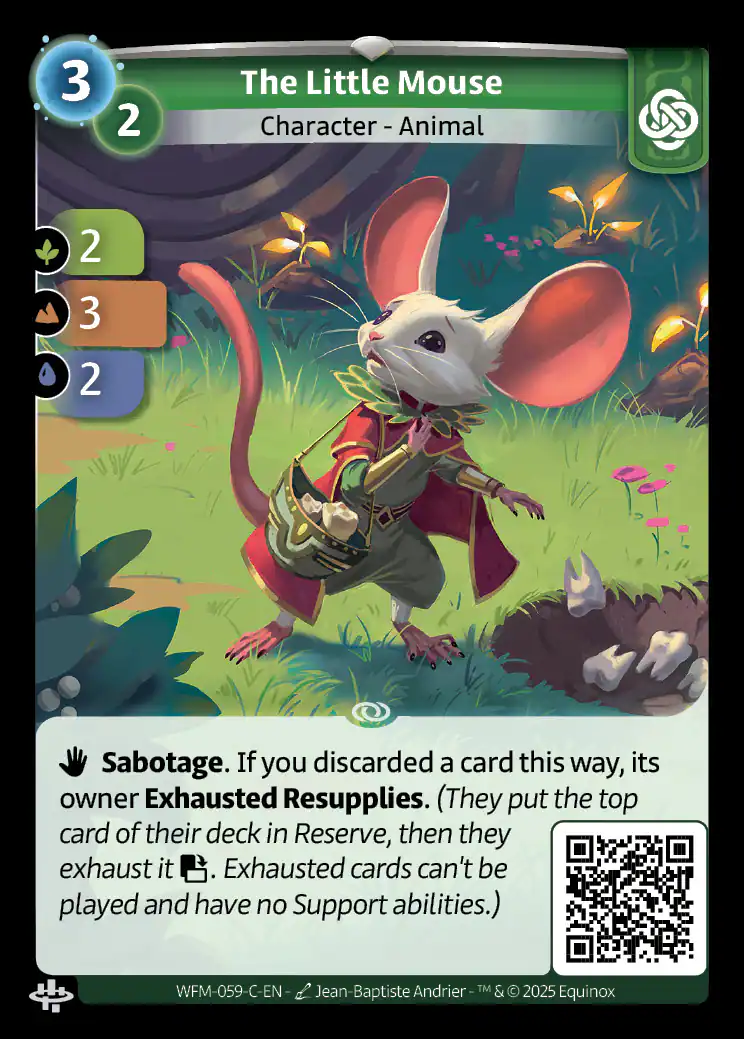
The Little Mouse (C): This sits somewhere between sabotage and exhaust: if a card is worth sabotaging, it’s likely that the average card from your opponent’s deck will be weaker. This effect becomes especially valuable since the set’s passive support abilities mean there will be high-value targets in reserve. This is comparable to Ordis Spy (C) in a limited environment lacking in immediate reserve disruption.
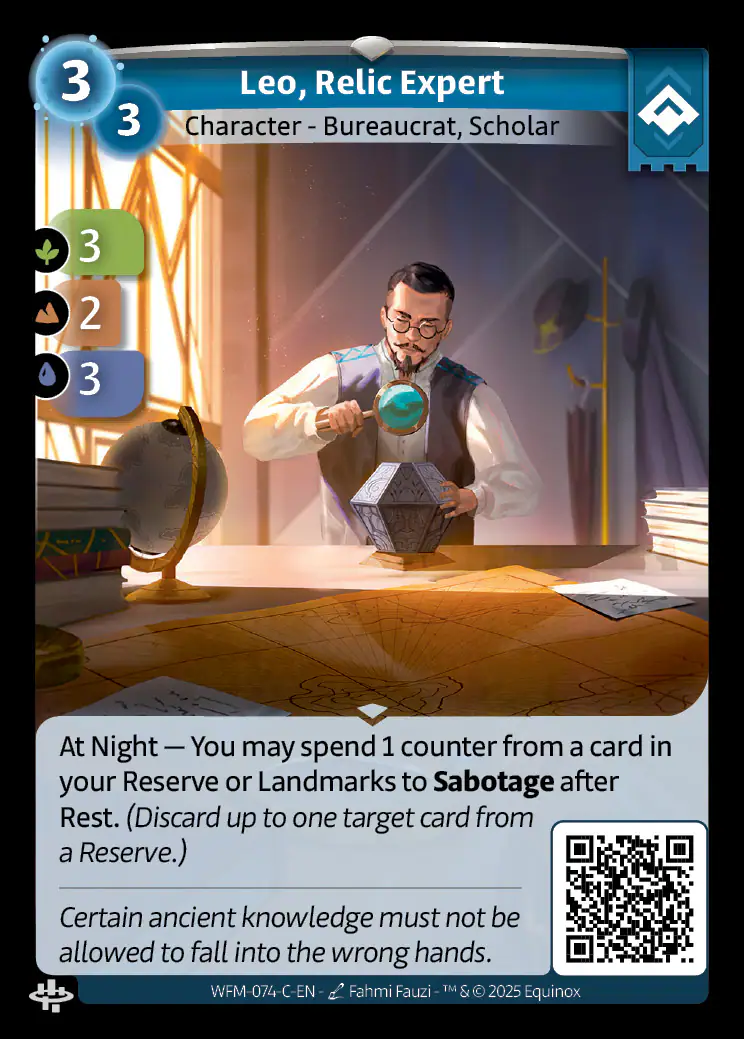
Leo, Relic Expert (C): The “after rest” sabotage timing (like that of Monolith Legate) is quite powerful. It lets you hit characters that were played the same afternoon, but you can also target a character with a passive support ability that’s building up boosts. Most characters in reserve with a passive support ability will spot you the required counter, but you’re also fine playing this out for its stats. With Waru and a continuous boost source in reserve, you can sabotage four days in a row.

Bumblebeet (C): My favorite 1-drop of the set for limited. The after-you helps you jockey for priority. You’re rewarded with an eventual 2-mana 3/3/3 from reserve, but a 2-mana 2/2/2 is solid as well if you just need something quick. Costing 2 from reserve and having no 0s edges this out over the similar Designer Drone (C), Junior Chef (C), and Ordis Crier (C).
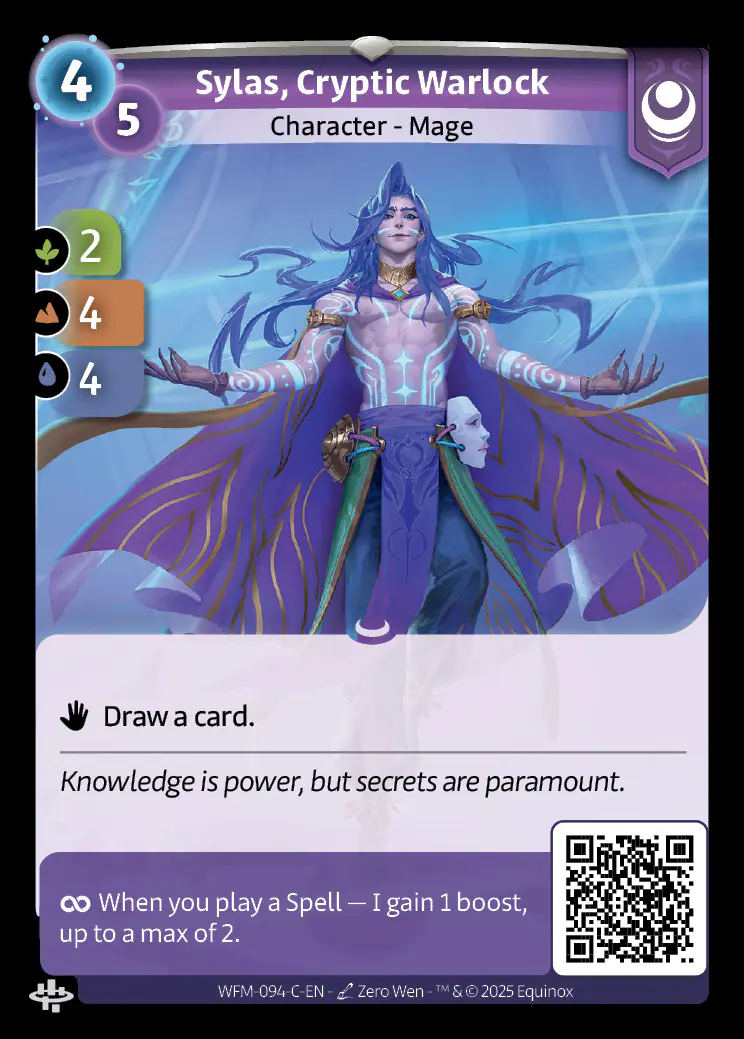
Sylas, Cryptic Warlock (C): Drawing a card is very powerful, and Sylas will often let you do it while going 1-1. You won’t always be able to play him profitably from reserve, but you’re still going up on cards.
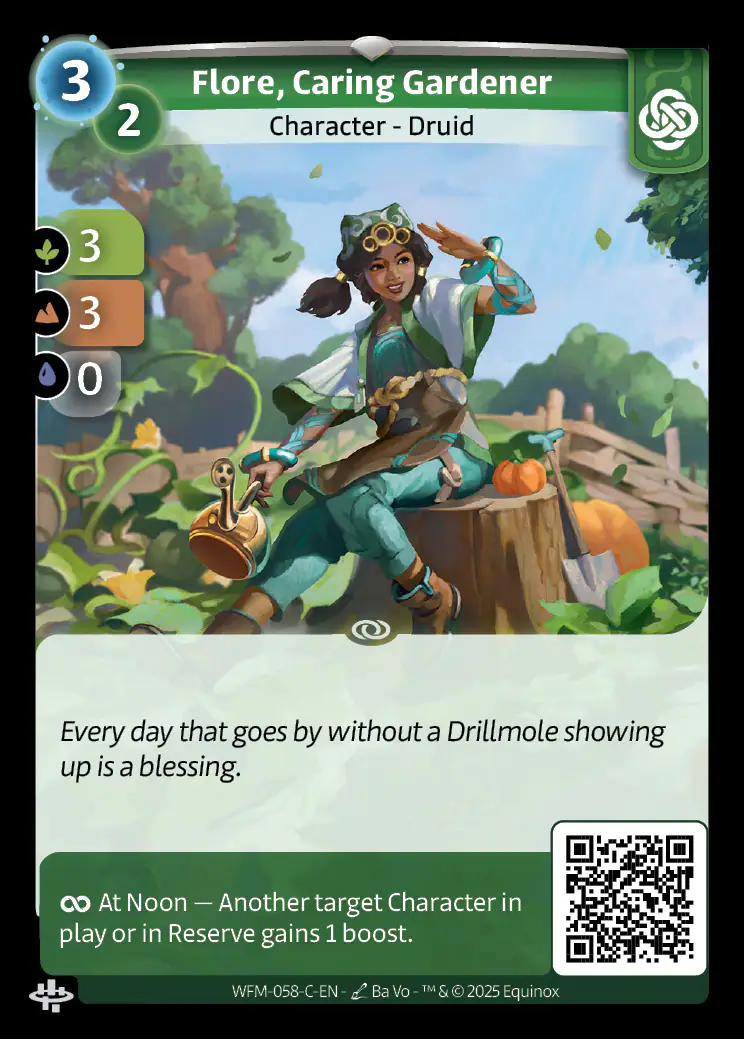
Flore, Caring Gardener (C): Flore looks like a high pick for heroes that can cheat her into reserve: Fen, Treyst, Subhash, and Rin.

Cuppa Sap (C): This lets you cheaply after-you, then once your opponent commits, beat their play with a double-boosted character. It does require setting up a character in reserve to receive the boost. However, there’s not a ton of surprise sabotage/exhaust in this limited environment, so it’s less likely you’ll get blown out.
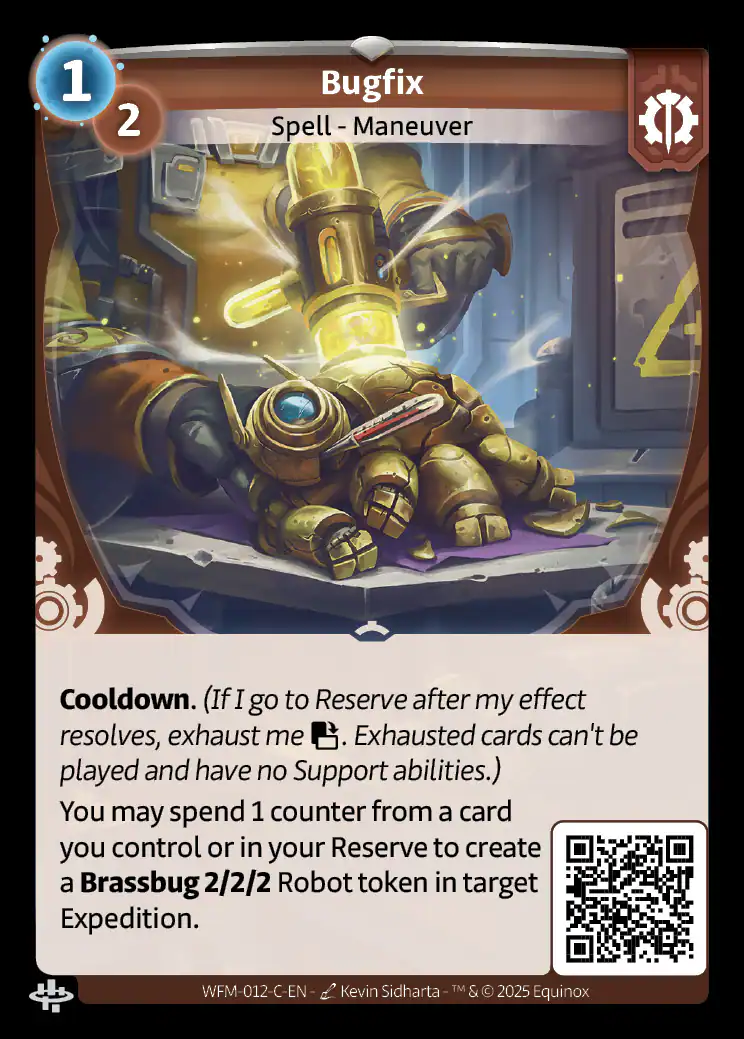
Bugfix (C): This deserve a special shout-out for Atsadi. He guarantees you the heroism counter to create a 1-mana Brassbug, then this reduces your counters by one, letting you draw off of a 4-drop and get one additional draw in the long run.
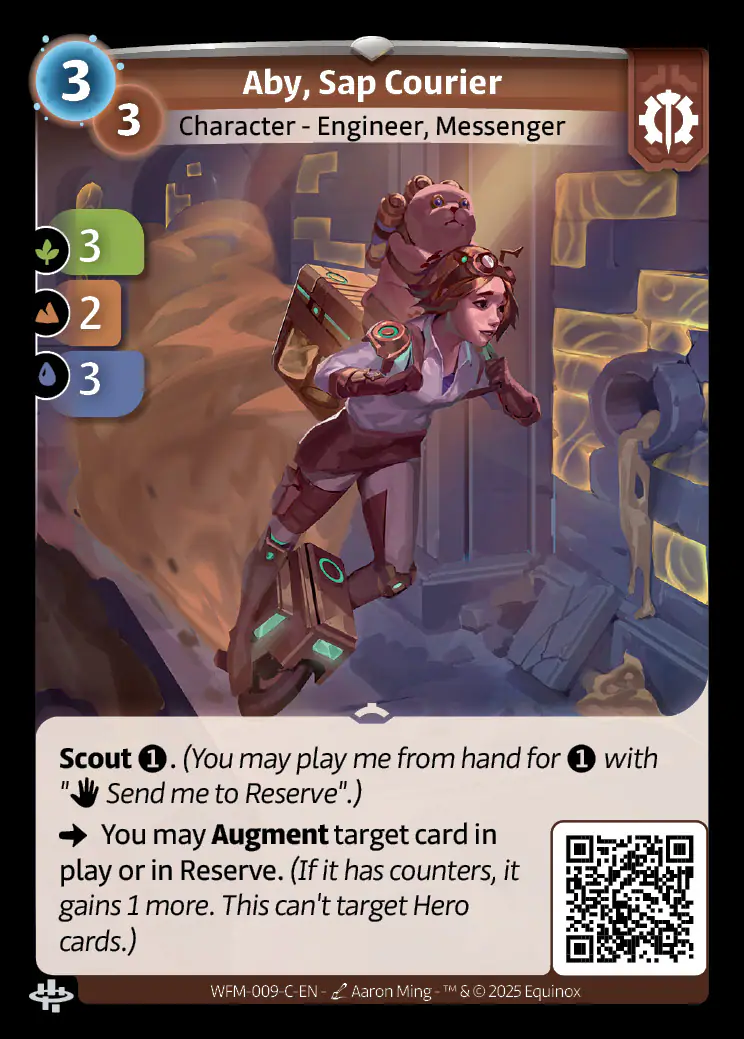
Aby, Sap Courier (C): If Aby gives a boost, she provides an above-rate 4/3/4 for 3 mana from hand and from reserve. The flexibility to after-you while building stats with the scout ability makes her even better.
General observations
Fen looks like the hero to beat
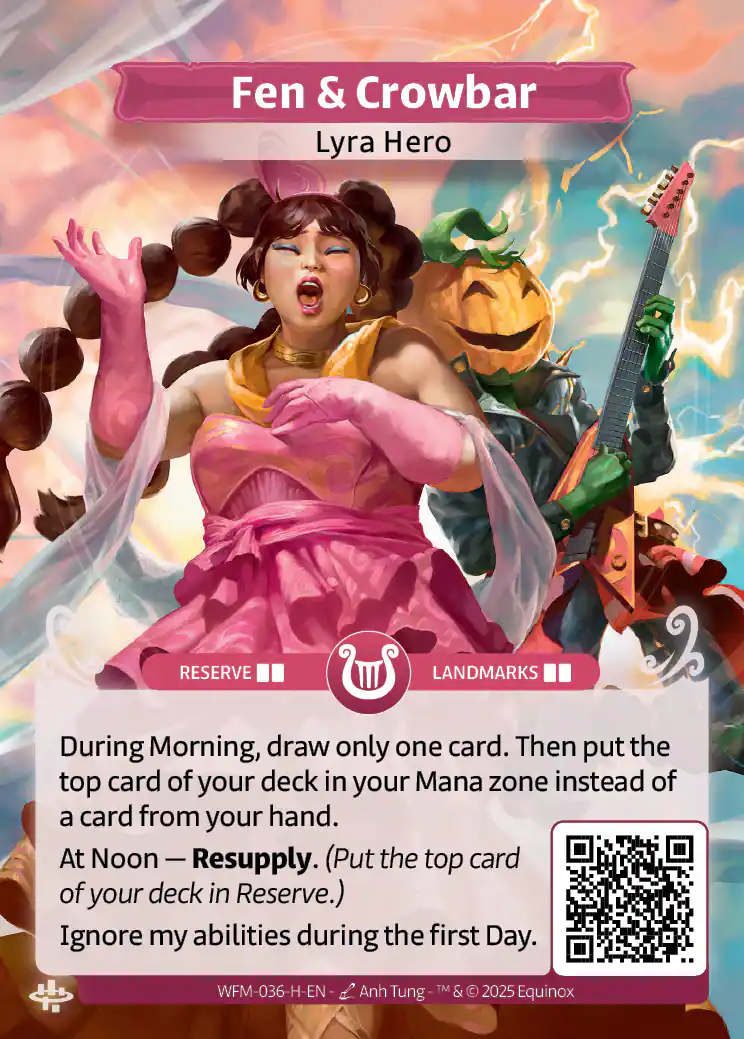
The absence of Sigismar and Kojo means there won’t be any heroes in the pool that can passively generate a token. As a result, I expect games to go slightly longer on average, which gives an advantage to value heroes like Fen. The theme of passive support abilities also favors Fen, whose hero ability can get these cards directly into reserve to start accumulating counters without the upfront mana investment.
Teija is another strong contender due to the generic value she gets from her free boost. It also helps with counter/augment synergies.
I like Axiom due to the depth and generic strength of their card pool, though I have minor concerns about each of the heroes. Subhash can be this set’s aggro hero but there aren’t too many ways to ensure he doesn’t run out of cards. Treyst looks slow to get online; even though scout helps get cards into reserve, passive support abilities prefer to stay there longer.
Rin can take advantage of all the support abilities that want to get into reserve. Less token-aggro means its easier to win expeditions to trigger her ability and that has time to take advantage of the card advantage in the late-game. Likewise, Akesha is more likely to be able to force early 1-0s out of opponents. My guess would be that these two fill out the second tier of heroes.
I probably have Nevenka and Atsadi not far behind. There’s some hero ability synergy with BLISS Keytarist and Lakshmi, but I see Nevenka more as a generically strong, if somewhat unreliable, tempo hero. The set strikes me as a little short on premium ramp and game-winning bombs for Atsadi, but there’s enough there with the scout mechanic on high-cost characters that I think I’ll be happy if he just nets me a couple of draws. Enhanced Prototype (R/F) and Bugfix (C) are pretty compelling to cheat out a few more draws.
Sabotage is scarce but valuable
A major theme of the set is passive support abilities. Many characters will be growing into high-value targets in reserve, making sabotage more important than ever.
That said, there’s not very much reserve disruption in the set, and most options are inefficient, delayed, or unreliable. (I like this from a design perspective; it would feel bad if people’s multi-boosted cards in reserve were constantly getting taken away from them.)

I went through and found all of the cards in the set that can prevent an opponent from playing a card in their reserve.
- Drillmole (C): from-reserve
- Sap Overflow (C): inefficient if used as sabotage
- Bravos Pendekar (C): after rest, requires setup
- Efren, Puppet Master (C): expensive, 50/50 chance of sabotage
- The Little Mouse (C)
- Leo, Relic Expert (C): after rest
- Feast of Thoughts (C): inefficient if used as sabotage
Compare these to the immediate, reliable sabotagers of Beyond the Gates like Tooth Fairy (C), Ordis Spy (C), Haven Bouncer (C), and Tanuki (C). Or the plentiful exhaust in Trial by Frost.
The Little Mouse (C) and Leo, Relic Expert (C) are the only cards I’d put in the same class in terms of efficiency, both of which I discuss both above. I also like Drillmole (C) despite it being telegraphed.
Boosts will be everywhere
In addition to the boosts provided by passive support abilities, there are spells that give boosts (Cuppa Sap, Sap Infusion), characters that self-boost (Lernaean Hydra, Sylas, Cryptic Warlock (R/F)), and all of the heroes that boost except Lindiwe.
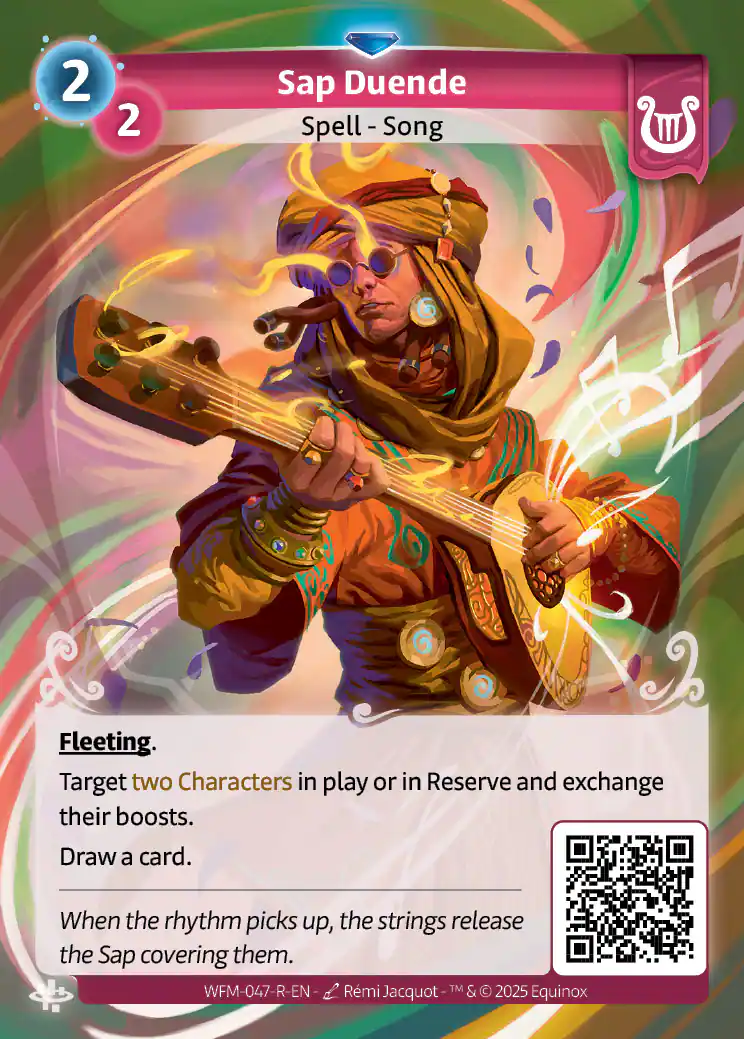
As a result, I expect that cards which interact with an opponent’s boosts will be more generically applicable than they might seem. I foresee Qorgan Informant (C) and Sap Duende (R) being responsible for some large blowouts.
Cards that remove fleeting such as Aoife, Fire Avatar and The Stew (R) can let you double dip on a support ability that was boosted to the max.
That said, I worry a bit for Basira, since there aren’t many trivial ways to apply boosts to characters in the expedition zone, especially in-faction and at common. Augment works but requires boosts to already be there. I think she’ll lean hard on Talarian Skater (C) and The Stew (C) in-faction. Bravos Excavator, Bravos Pendekar, and Spirit Wielder ask for commitment and won’t just slot into your deck.
Yzmir and Lyra passive support abilities require some effort
Each faction’s passive support has a different trigger. While most factions’ happen more or less automatically, Lyra’s and especially Yzmir’s require some work to accumulate.
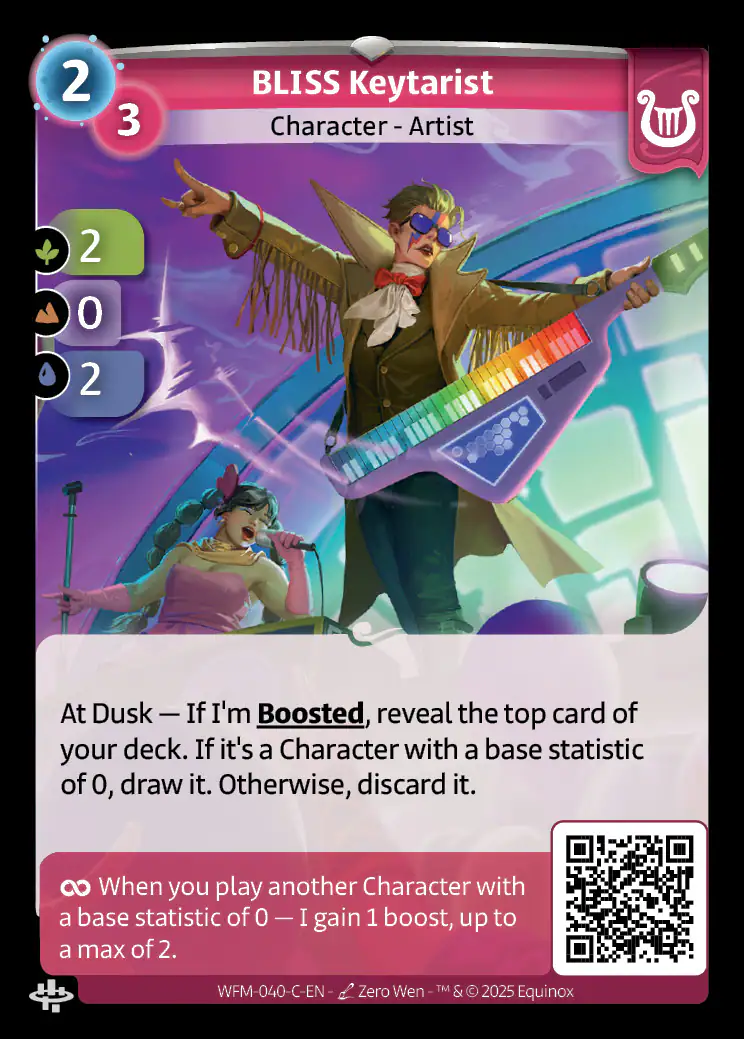
Lyra’s condition requires playing 0-stat characters. If you’re heavy on Lyra, this shouldn’t be an issue since nearly every in-faction character has a 0-stat. Other factions have a much lower density of 0-stat characters, however, so you might not be able to build boosts as fast as you’d like. Muna probably comes closest, with Flore, Caring Gardener, Burrowing Noosh, and Luminous Swarm.
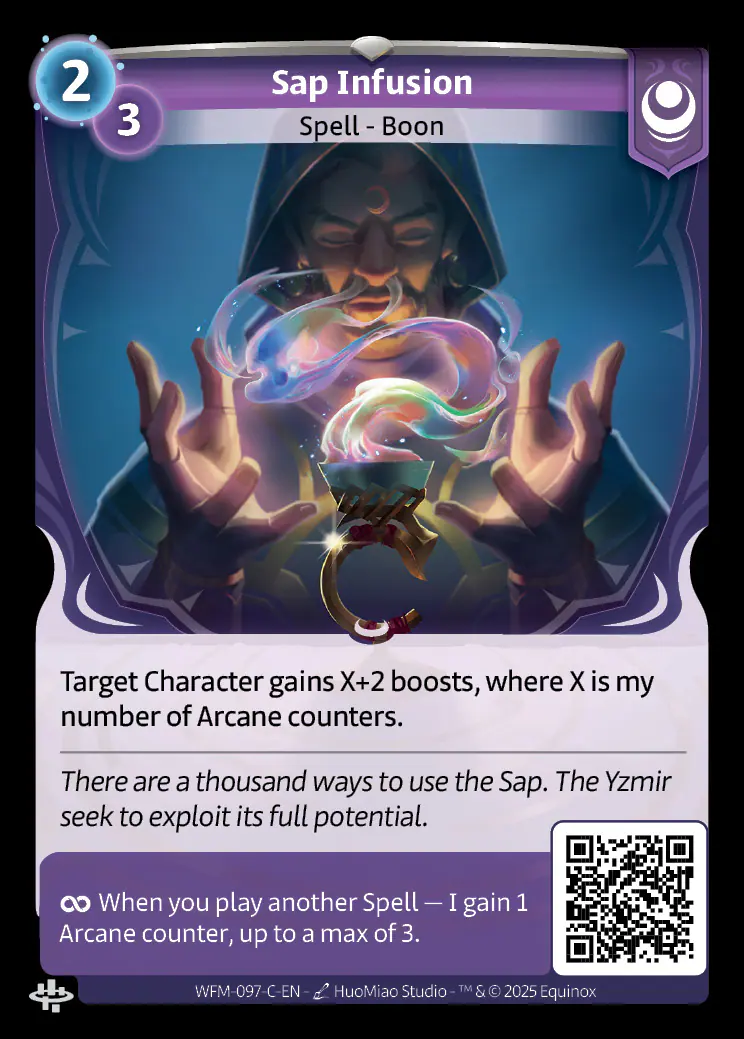
Yzmir requires a serious commitment to spells. This is tricky because spells are more situational than characters and don’t win expeditions on their own, so you can’t just build a deck of all spells. Many of the spells cost more from reserve or are fleeting, so it takes even longer to max out your passives. I’d evaluate the Yzmir passives as though they’ll accumulate 0 or 1 boosts/counters, and I’d hesitate to build around them unless you’re confident you can avoid the pitfalls.
